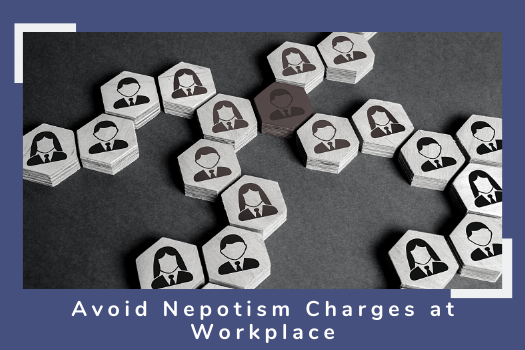HR Automation - Effectiveness Efficiency and Engagement - Part 1
Employee Engagement, Employee Relations, Rewards and Recognition
In last few years, I have developed my own unique process of networking with leaders and professionals across industries and it has worked efficiently for our mutual growth. I call it as “Service Model of Networking” as opposed to “Sales Model of Networking”. The “Service Model of Networking” doesn’t work on the basis of “revenue earned from every professional network”; instead, it works on “value addition” or “Unique Selling Proposition (USP) you bring to the table, it is much focused and creates win-win outcomes. Through “Service Model of Networking”, I don’t seek business from people in my network instead, I ask for their feedback on my work and my ideas that may eventually add value to their organizations. I believe, it is very engaging and at the same time non-irritating approach. It has helped me to reach out and develop a wonderful relationship with many CEO and Managing Directors of small and mid-sized organizations (less than 5,000 employees).
Last year, in the month of March, I was contacted by the CEO of a mid-sized engineering organization headquartered in Gurgaon. The organization which currently employs 625+ employees is now considering few global acquisitions and is also planning to set-up a new plant in Pune. Till date, 15 employees were managing the Human Resource activities through Microsoft Suit, primarily MS Excel and low-level software for managing payroll. My initial conversation with the CEO indicated that he was not happy with the functioning of HR Team. He asked me about my experience and level of involvement in HR Automation Projects and if I will be interested in taking up a project with the organization. After I submitted my detailed response to him, he called me for a meeting at his office in Gurgaon. In a daylong meeting with CEO, CFO, and other stakeholders, we discussed the expected outcome of the project, commercials and budget involved, and a timeline to submit the project. As a part of the project, I was asked to evaluate their existing processes, suggest a cost-effective solution develop software in-house or to purchase it from the market and get customized. I was asked to provide a list of best THREE HRMS available in the market if buying from outside or prepare a detailed project plan and help in getting it executed if opting for in-house.
Challenges Involved in Successful Implementation of HR Automation
- Process Owners Opposing the Change - Like any other change, this change was also furiously opposed by process owners. For them, automating processes implies learning new skills. If they fail to do so, they might risk losing their jobs. During my initial interactions with the HR team, they gave me numerous reasons as to why automation is a bad idea. One of the reasons was, losing “human touch”. Someone said, “We are working in HR Function, therefore, we need to understand feelings, emotions, and difficulties of our employees and resolve it accordingly. With automation, everything will become mechanical and we will lose a chance to interact with them and as a result, there will be high attrition”. Another HR manager said, “These people don’t know how to operate computers. They are too rigid to learn new things. It will increase the workload on HR Department”. Yet another member of HR Team blamed the leadership of the organization, “They never discussed it with us. That’s how they treat us. We work so hard, sometimes we work for 12-13 hours a day and yet they don’t involve us in decision making. They should have involved us in this decision as it was about our department before appointing you as a consultant and paying such a huge amount (I don’t know how they found about my commercial fee). We would have felt motivated had they given that amount to us instead of wasting it”. It took me a lot of time to convince them and show them an opportunity to grow and learn new skills. I also gave them an insight into how they can develop their career in HR and be more effective. I won’t claim that the entire HR team was convinced with my explanation and argument but 3/4th of the lot were.
- Running Parallel Systems–HR prefers to run parallel systems - manual as well as automated HR processes. Though they continue with the manual process as a backup plan to ensure functional continuity until the automation is completed and employees get enough training to use processes efficiently and effectively. However, the truth is that in many mid-sized organizations, they never really move to automation. I know few organizations where they manage time-office and payroll in MS Excel as well as in Software. The only way to move towards HR Process Automation is to completely shut-down the manual process and use the software efficiently and optimally. There might be few challenges in the initial months of implementation, maybe 4-6 months, but after that, it will be easy to work. It will not only save the time but will also increase the accuracy. Don’t create a pain for lifelong if something can be cured with a hospitalization for 4-6 months.
- Inaccurate and Incomplete Database – For an automation of HR processes to work flawlessly, TWO things must be accurate and updated by minute – Process Flow and Database. If process flow and database are inaccurate and incomplete, then no matter which HRMS one uses and how expensive it is, it won’t give the desired result. Hence, it is a responsibility of HR to audit the database and process flow on regular basis, preferably on weekly basis. I remember one case where an employee was offered a salary of 360,000/- INR per annum, however, a manager who was responsible for adding details into the system, added 3,600,000/- INR per annum. As a result, the new employee received a salary of 300,000/- INR per month. After four months this error came into notice but by then the employee had already left the organization. There was another case of an employee receiving full salary for THREE months after leaving the organization because the person who was responsible for updating the database missed clicking a tick in the system. In order to maintain database confidentiality and determine accountability, it is important that database updating rights are given to few people only.
In a case of any queries, please contact the author.






